The saying ‘out with the old and in with the new’ is one that’s no doubt familiar. It’s a phrase coined to inspire us as we move forwards, to purge what has come before and to focus on the future. Our pasts are a part of us. In celebration of National Old Stuff Day (2nd March) we decided to revel in the nostalgia of the occasion and look back at the history of mobile phones and some of the most iconic handset designs to ever be released.
Motorola DynaTAC (1983)
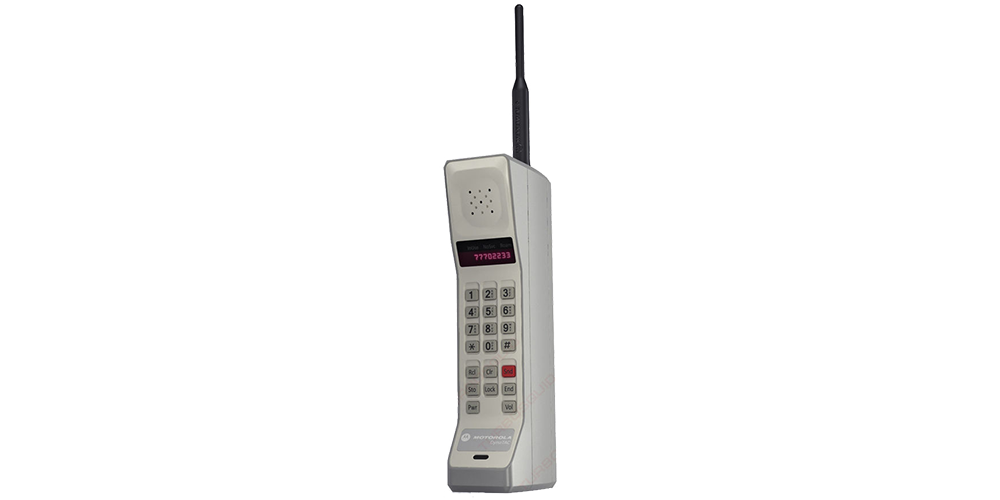 Since we’re looking back, we might as well reflect on where it all began. Several versions of the Motorola DynaTAC have been produced over the years but the DynaTac 8000X is perhaps the most memorable. Why? It was the first commercially available mobile phone. Released a decade after the first mobile phone call was made, the DynaTAC 8000X could store an impressive 30 numbers, offered a whopping 30 minutes of call time, and took a mere 10 hours to charge. Its bulky size and shape earned it the affectionate nickname of the ‘brick’ phone. This, humble readers, is where mobile phones began.
Since we’re looking back, we might as well reflect on where it all began. Several versions of the Motorola DynaTAC have been produced over the years but the DynaTac 8000X is perhaps the most memorable. Why? It was the first commercially available mobile phone. Released a decade after the first mobile phone call was made, the DynaTAC 8000X could store an impressive 30 numbers, offered a whopping 30 minutes of call time, and took a mere 10 hours to charge. Its bulky size and shape earned it the affectionate nickname of the ‘brick’ phone. This, humble readers, is where mobile phones began.
Nokia 3210 (1999)
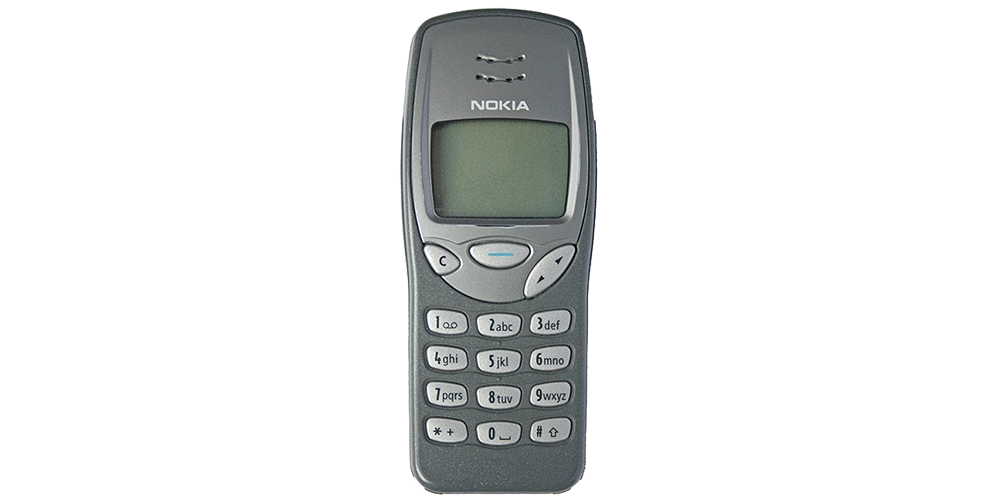 The Nokia 3210 is considered to be one of the most significant handsets Nokia ever developed. More than that, it’s one of the most popular and successful phones in history. It’s an impressive feat of technology – one of the first phones to feature an internal antenna and the first to feature Nokia’s Composer software, allowing users to create custom monotone ringtones. It introduced the idea of interchangeable covers, with options available in a range of bright colours to suit any personality. Perhaps its most memorable feature, however, was that it came pre-loaded with three games: Rotation, Memory, and Snake. It might seem outdated now, but is any other handset considered with such reverence?
The Nokia 3210 is considered to be one of the most significant handsets Nokia ever developed. More than that, it’s one of the most popular and successful phones in history. It’s an impressive feat of technology – one of the first phones to feature an internal antenna and the first to feature Nokia’s Composer software, allowing users to create custom monotone ringtones. It introduced the idea of interchangeable covers, with options available in a range of bright colours to suit any personality. Perhaps its most memorable feature, however, was that it came pre-loaded with three games: Rotation, Memory, and Snake. It might seem outdated now, but is any other handset considered with such reverence?
Nokia 7600 (2003)
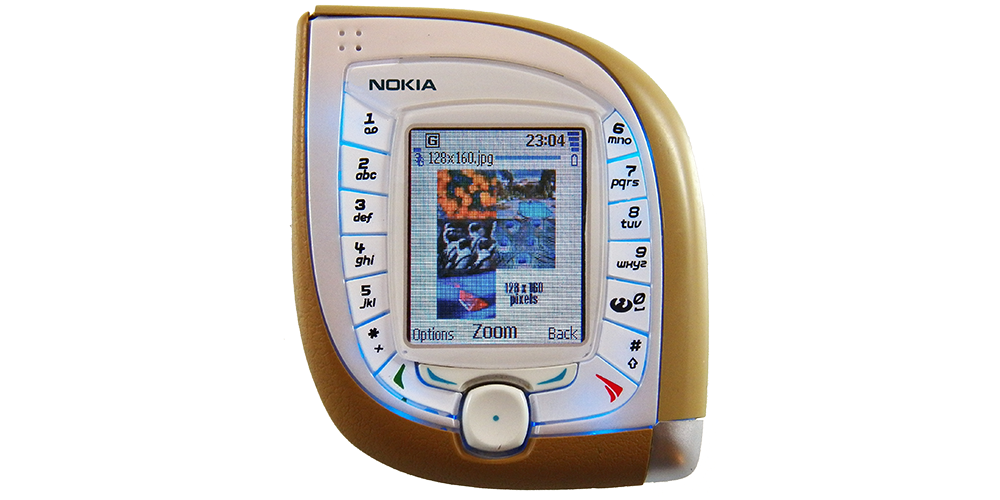 A mobile phone doesn’t have to be practical to be iconic. Designed to be a cross between a mobile handset and a gaming controller, the Nokia 7600 featured a screen in the centre of the device with buttons lining the sides. At the time of its release, it was one of the smallest and lightest dual-band GSM and 3G phones in the world. Shaped not unlike a Tamagotchi, it broke the mould in terms of what mobile should look like. It didn’t catch on. As a result, the Nokia 7600 is one of a kind – and all the more appealing for it.
A mobile phone doesn’t have to be practical to be iconic. Designed to be a cross between a mobile handset and a gaming controller, the Nokia 7600 featured a screen in the centre of the device with buttons lining the sides. At the time of its release, it was one of the smallest and lightest dual-band GSM and 3G phones in the world. Shaped not unlike a Tamagotchi, it broke the mould in terms of what mobile should look like. It didn’t catch on. As a result, the Nokia 7600 is one of a kind – and all the more appealing for it.
Samsung SPH-N270
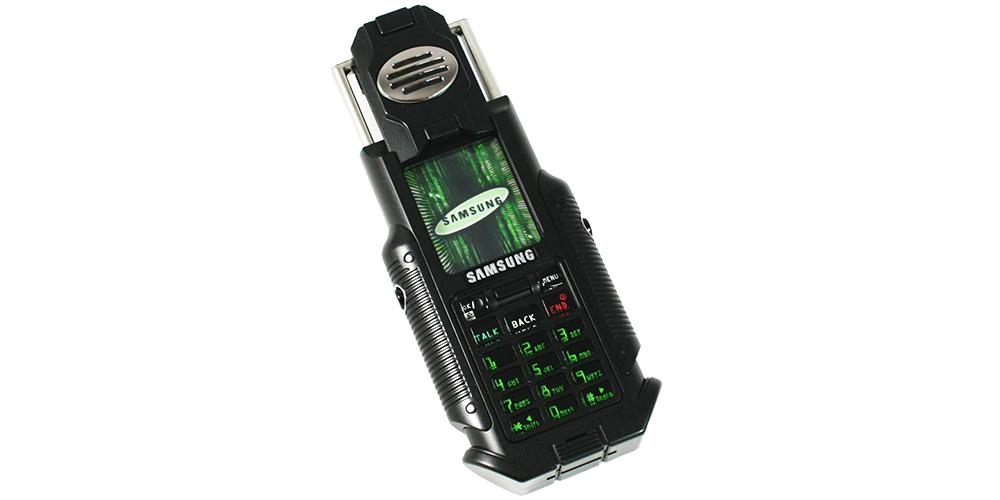 Released the same year as the Nokia 7600, the Samsung SPH-N270 is a glimpse at what the past imagined the future might look like. The SPH-N270 features a spring-loaded earpiece which pops up to reveal the screen. If configured to do so, snapping up the earpiece would answer calls. It’s a bizarre looking piece of tech, when considered out of context. The SPH-N270’s unique design makes more sense when you consider the fact that it was designed to feature in (and released to promote) The Matrix Reloaded.
Released the same year as the Nokia 7600, the Samsung SPH-N270 is a glimpse at what the past imagined the future might look like. The SPH-N270 features a spring-loaded earpiece which pops up to reveal the screen. If configured to do so, snapping up the earpiece would answer calls. It’s a bizarre looking piece of tech, when considered out of context. The SPH-N270’s unique design makes more sense when you consider the fact that it was designed to feature in (and released to promote) The Matrix Reloaded.
iPhone (2007)
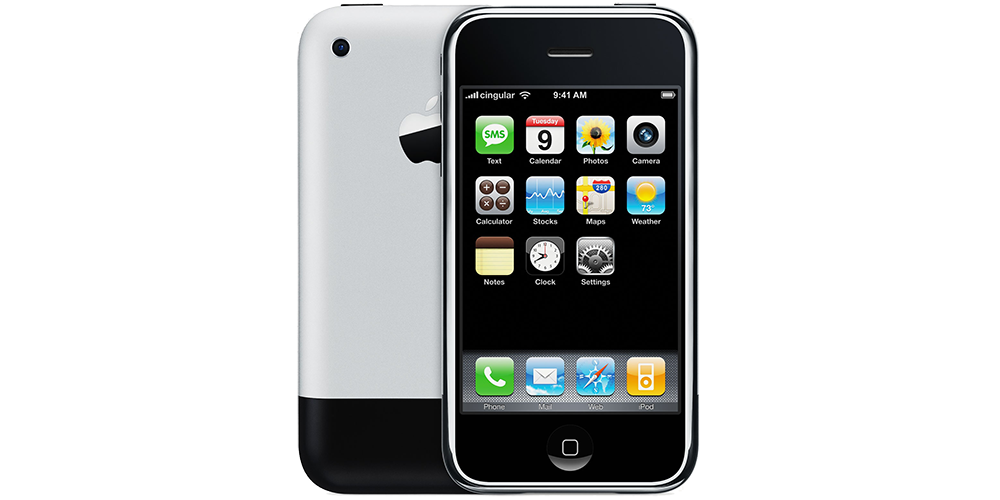 The one, the only, the original. When the first iPhone was released in 2007 it changed the game for mobile technology. Looking back on it now, it’s impressive to see how much the Apple product has grown. The first iPhone was designed to combine the purpose and success of Apple’s iPod with mobile communication technology. It was an instant hit, of course, though very different to its successors. There was no app store or third-party applications, but this piece of tech paved the way for the shape smartphones took going forwards.
The one, the only, the original. When the first iPhone was released in 2007 it changed the game for mobile technology. Looking back on it now, it’s impressive to see how much the Apple product has grown. The first iPhone was designed to combine the purpose and success of Apple’s iPod with mobile communication technology. It was an instant hit, of course, though very different to its successors. There was no app store or third-party applications, but this piece of tech paved the way for the shape smartphones took going forwards.
As the old saying goes, technology waits for no man (that is how it goes, right?). Mobile phone designs have come along leaps and bounds in the past decade alone, and will likely evolve again in the next ten years. Mobile tech is ever-advancing to meet our needs. With numerous new handsets being unveiled every year, the future of mobile technology is now.
We’re always looking towards the future of tech. To get the best deals on the latest handsets, visit our March Special Offers page.

